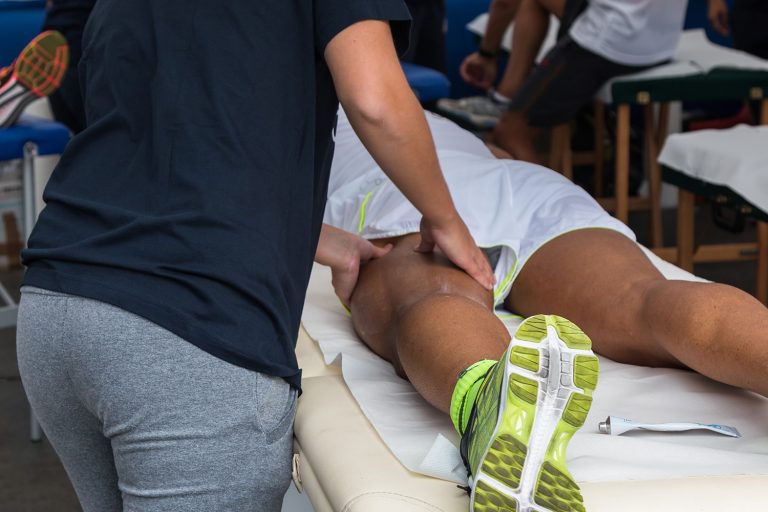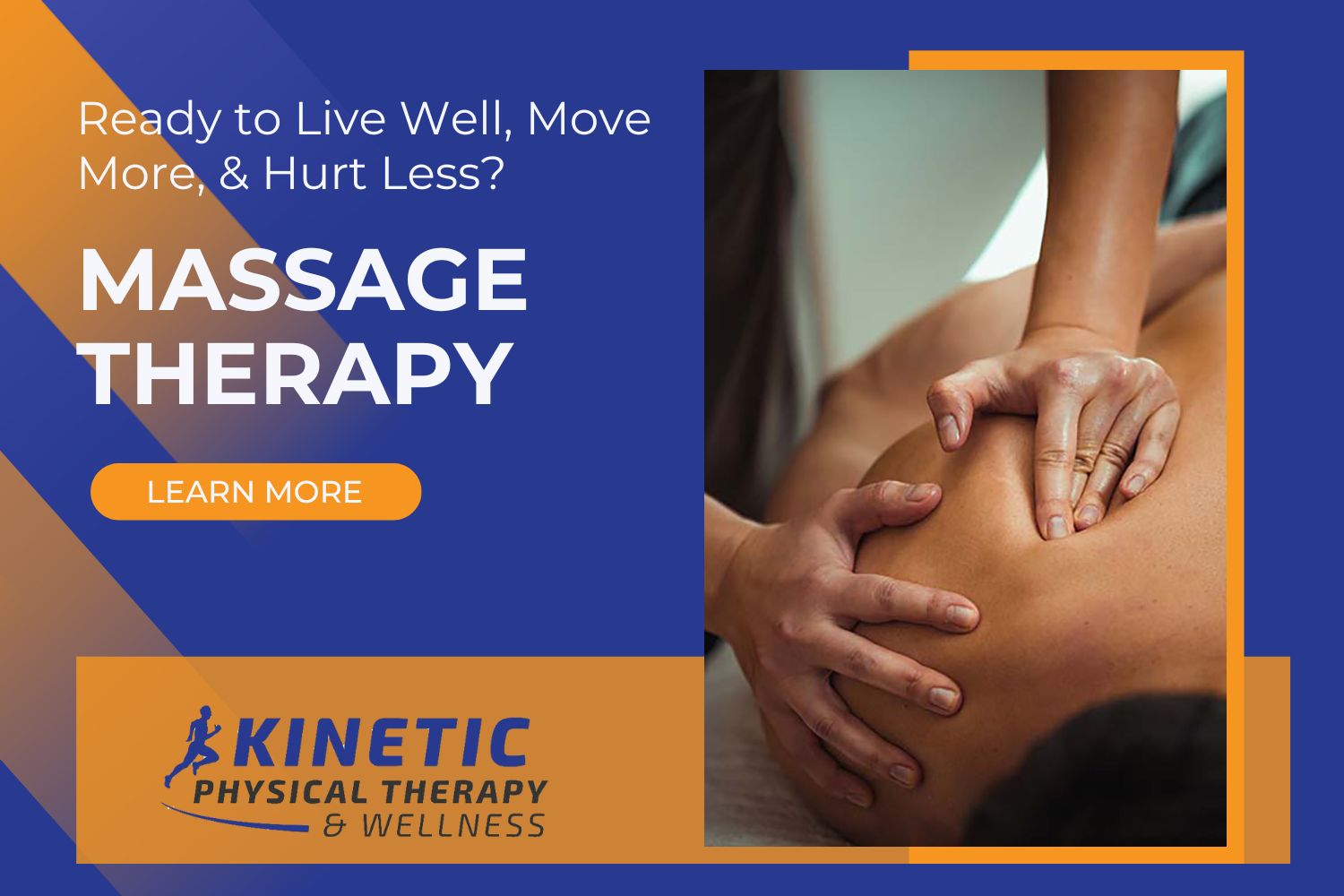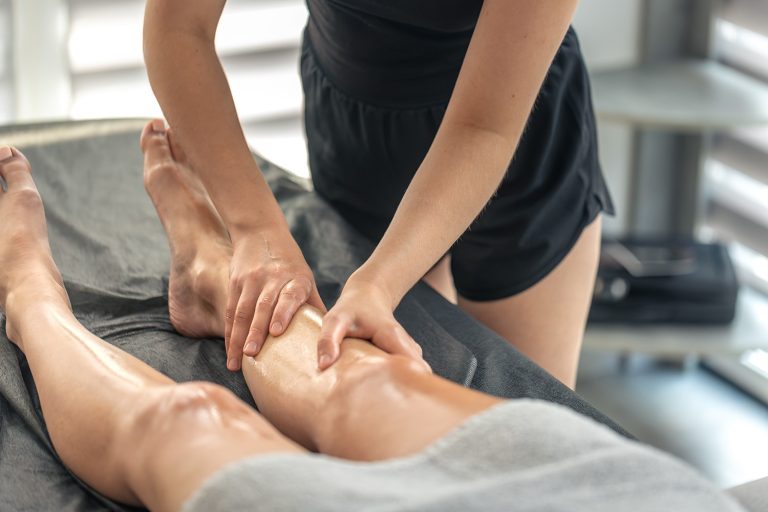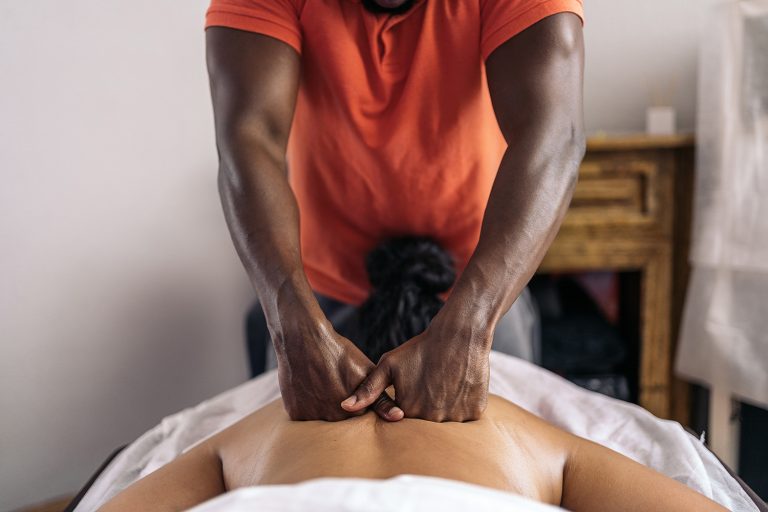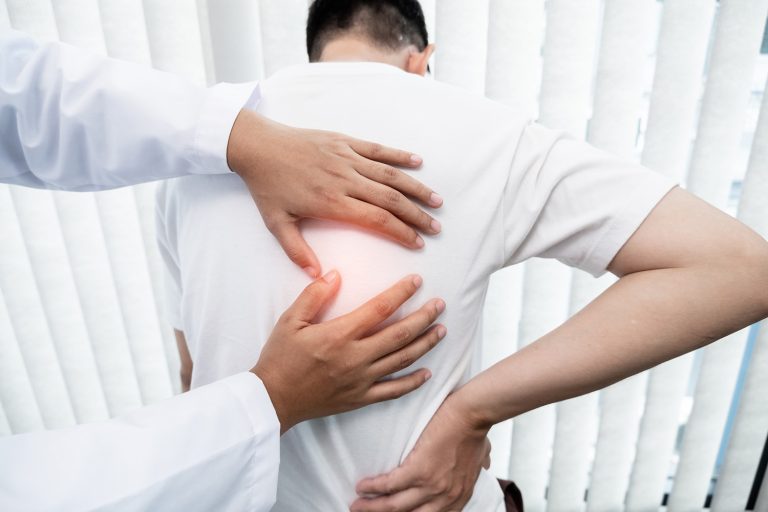

The Role of Massage Therapy as a Complement to Physical Therapy
Enhancing Rehabilitation Outcomes
Rehabilitation after an injury, surgery, or chronic pain condition often requires a comprehensive approach to ensure full recovery and restore optimal function. At Kinetic Physical Therapy and Wellness in Greenville, NC, we are dedicated to providing personalized, one-on-one care in a vibrant and supportive environment. One of the most effective ways to enhance rehabilitation outcomes is by combining physical therapy with massage therapy. This powerful synergy can accelerate healing, improve mobility, and contribute to a more successful and holistic recovery process. In this blog post, we will explore how massage therapy complements physical therapy and why integrating these treatments can lead to better rehabilitation outcomes.
The Role of Physical Therapy in Rehabilitation
Physical therapy is a cornerstone of rehabilitation, focusing on restoring movement, improving strength, and alleviating pain. Whether recovering from an injury, surgery, or managing a chronic condition, physical therapy aims to help patients regain function and improve their quality of life.
Restoring Mobility and Function
Physical therapists use a variety of techniques, including exercises, manual therapy, and modalities like heat or cold therapy, to improve mobility and function. By addressing the root cause of movement limitations, physical therapy helps patients regain their ability to perform daily activities and return to their normal routines.
Alleviating Pain and Inflammation
Pain management is a critical component of physical therapy. Through targeted exercises and manual techniques, physical therapists work to reduce pain and inflammation, allowing patients to move more freely and comfortably. This is particularly important for individuals recovering from surgeries or injuries, where pain can be a significant barrier to recovery.
Preventing Future Injuries
Physical therapy not only focuses on current rehabilitation needs but also emphasizes injury prevention. By improving strength, flexibility, and balance, physical therapy helps to correct movement patterns and reduce the risk of future injuries. This proactive approach is essential for long-term health and well-being.
The Role of Massage Therapy in Rehabilitation
Massage therapy is often associated with relaxation and stress relief, but its benefits extend far beyond these immediate effects. When used as a complement to physical therapy, massage therapy can play a crucial role in enhancing rehabilitation outcomes.
Reducing Muscle Tension and Spasm
Muscle tension and spasms are common issues that can hinder recovery and limit mobility. Massage therapy works to release tight muscles, reduce spasms, and improve circulation, allowing the body to heal more effectively. By alleviating muscle tension, massage therapy can make physical therapy exercises more comfortable and effective.
Enhancing Circulation and Tissue Healing
Improved circulation is one of the key benefits of massage therapy. By increasing blood flow to injured or affected areas, massage therapy promotes the delivery of oxygen and nutrients essential for tissue repair. This can accelerate the healing process and reduce recovery time, allowing patients to progress more quickly in their physical therapy programs.
Reducing Pain and Inflammation
Like physical therapy, massage therapy is highly effective at managing pain and inflammation. The gentle pressure and rhythmic movements used in massage can stimulate the release of endorphins—natural painkillers produced by the body. Additionally, massage therapy can help reduce the production of inflammatory cytokines, further alleviating pain and swelling.
Promoting Relaxation and Mental Well-Being
Rehabilitation is not only a physical process but also a mental and emotional one. Massage therapy promotes relaxation and reduces stress, which can have a positive impact on mental well-being. This is particularly important during rehabilitation, as stress and anxiety can impede progress and affect the overall outcome. By promoting a sense of calm and well-being, massage therapy supports a more positive rehabilitation experience.
The Synergy Between Massage Therapy and Physical Therapy
When combined, massage therapy and physical therapy create a powerful synergy that enhances the effectiveness of both treatments. This integrated approach addresses both the physical and emotional aspects of rehabilitation, leading to better outcomes and a more comprehensive recovery process.
Improving Range of Motion and Flexibility
One of the primary goals of physical therapy is to improve range of motion and flexibility. Massage therapy can significantly aid in this process by relaxing tight muscles and breaking down adhesions (scar tissue) that restrict movement. This increased flexibility allows patients to perform physical therapy exercises with greater ease and effectiveness, accelerating their progress.
Enhancing Exercise Tolerance and Performance
Physical therapy often involves exercises that challenge strength, endurance, and balance. However, pain and muscle tension can limit a patient’s ability to perform these exercises effectively. Massage therapy helps to reduce discomfort and improve muscle function, allowing patients to engage more fully in their physical therapy sessions. This enhanced exercise tolerance leads to better performance and faster rehabilitation outcomes.
Facilitating Post-Exercise Recovery
After a physical therapy session, muscles can feel sore and fatigued. Massage therapy provides an excellent way to facilitate post-exercise recovery by reducing muscle soreness, promoting relaxation, and improving circulation. This not only helps patients feel better after their sessions but also prepares their bodies for the next phase of rehabilitation.
Addressing Psychological Barriers to Recovery
Rehabilitation can be a challenging and sometimes frustrating process, particularly for individuals dealing with chronic pain or long-term injuries. The stress and emotional strain of rehabilitation can create psychological barriers that impede progress. Massage therapy helps to address these barriers by promoting relaxation, reducing stress, and enhancing overall mental well-being. This psychological support is an essential component of a successful rehabilitation journey.
Personalized Care at Kinetic Physical Therapy and Wellness
At Kinetic Physical Therapy and Wellness in Greenville, NC, we believe in a holistic approach to rehabilitation that considers the unique needs of each patient. Our one-on-one specialized therapy sessions are designed to provide personalized care in a professional, yet colorful and vibrant atmosphere. By integrating massage therapy with physical therapy, we offer a comprehensive treatment plan that addresses all aspects of rehabilitation—physical, mental, and emotional.
Our experienced therapists work closely together to ensure that each patient receives the most effective and individualized care possible. Whether you’re recovering from surgery, managing a chronic condition, or seeking to improve your overall well-being, our integrated approach can help you achieve your rehabilitation goals more quickly and effectively.
Embrace the Benefits of Combined Massage and Physical Therapy
The combination of massage therapy and physical therapy offers a powerful and holistic approach to rehabilitation. By addressing both the physical and emotional aspects of recovery, this integrated treatment plan can enhance rehabilitation outcomes, reduce recovery time, and promote long-term health and well-being. At Kinetic Physical Therapy and Wellness in Greenville, NC, we are committed to providing the highest quality care in a supportive and vibrant environment. If you’re ready to experience the benefits of combined massage and physical therapy, contact us today to schedule your appointment and take the next step in your rehabilitation journey.
Please Share
categories
Recent Posts

The Role of Massage Therapy as a Complement to Physical Therapy
Enhancing Rehabilitation Outcomes
Rehabilitation after an injury, surgery, or chronic pain condition often requires a comprehensive approach to ensure full recovery and restore optimal function. At Kinetic Physical Therapy and Wellness in Greenville, NC, we are dedicated to providing personalized, one-on-one care in a vibrant and supportive environment. One of the most effective ways to enhance rehabilitation outcomes is by combining physical therapy with massage therapy. This powerful synergy can accelerate healing, improve mobility, and contribute to a more successful and holistic recovery process. In this blog post, we will explore how massage therapy complements physical therapy and why integrating these treatments can lead to better rehabilitation outcomes.
The Role of Physical Therapy in Rehabilitation
Physical therapy is a cornerstone of rehabilitation, focusing on restoring movement, improving strength, and alleviating pain. Whether recovering from an injury, surgery, or managing a chronic condition, physical therapy aims to help patients regain function and improve their quality of life.
Restoring Mobility and Function
Physical therapists use a variety of techniques, including exercises, manual therapy, and modalities like heat or cold therapy, to improve mobility and function. By addressing the root cause of movement limitations, physical therapy helps patients regain their ability to perform daily activities and return to their normal routines.
Alleviating Pain and Inflammation
Pain management is a critical component of physical therapy. Through targeted exercises and manual techniques, physical therapists work to reduce pain and inflammation, allowing patients to move more freely and comfortably. This is particularly important for individuals recovering from surgeries or injuries, where pain can be a significant barrier to recovery.
Preventing Future Injuries
Physical therapy not only focuses on current rehabilitation needs but also emphasizes injury prevention. By improving strength, flexibility, and balance, physical therapy helps to correct movement patterns and reduce the risk of future injuries. This proactive approach is essential for long-term health and well-being.
The Role of Massage Therapy in Rehabilitation
Massage therapy is often associated with relaxation and stress relief, but its benefits extend far beyond these immediate effects. When used as a complement to physical therapy, massage therapy can play a crucial role in enhancing rehabilitation outcomes.
Reducing Muscle Tension and Spasm
Muscle tension and spasms are common issues that can hinder recovery and limit mobility. Massage therapy works to release tight muscles, reduce spasms, and improve circulation, allowing the body to heal more effectively. By alleviating muscle tension, massage therapy can make physical therapy exercises more comfortable and effective.
Enhancing Circulation and Tissue Healing
Improved circulation is one of the key benefits of massage therapy. By increasing blood flow to injured or affected areas, massage therapy promotes the delivery of oxygen and nutrients essential for tissue repair. This can accelerate the healing process and reduce recovery time, allowing patients to progress more quickly in their physical therapy programs.
Reducing Pain and Inflammation
Like physical therapy, massage therapy is highly effective at managing pain and inflammation. The gentle pressure and rhythmic movements used in massage can stimulate the release of endorphins—natural painkillers produced by the body. Additionally, massage therapy can help reduce the production of inflammatory cytokines, further alleviating pain and swelling.
Promoting Relaxation and Mental Well-Being
Rehabilitation is not only a physical process but also a mental and emotional one. Massage therapy promotes relaxation and reduces stress, which can have a positive impact on mental well-being. This is particularly important during rehabilitation, as stress and anxiety can impede progress and affect the overall outcome. By promoting a sense of calm and well-being, massage therapy supports a more positive rehabilitation experience.
The Synergy Between Massage Therapy and Physical Therapy
When combined, massage therapy and physical therapy create a powerful synergy that enhances the effectiveness of both treatments. This integrated approach addresses both the physical and emotional aspects of rehabilitation, leading to better outcomes and a more comprehensive recovery process.
Improving Range of Motion and Flexibility
One of the primary goals of physical therapy is to improve range of motion and flexibility. Massage therapy can significantly aid in this process by relaxing tight muscles and breaking down adhesions (scar tissue) that restrict movement. This increased flexibility allows patients to perform physical therapy exercises with greater ease and effectiveness, accelerating their progress.
Enhancing Exercise Tolerance and Performance
Physical therapy often involves exercises that challenge strength, endurance, and balance. However, pain and muscle tension can limit a patient’s ability to perform these exercises effectively. Massage therapy helps to reduce discomfort and improve muscle function, allowing patients to engage more fully in their physical therapy sessions. This enhanced exercise tolerance leads to better performance and faster rehabilitation outcomes.
Facilitating Post-Exercise Recovery
After a physical therapy session, muscles can feel sore and fatigued. Massage therapy provides an excellent way to facilitate post-exercise recovery by reducing muscle soreness, promoting relaxation, and improving circulation. This not only helps patients feel better after their sessions but also prepares their bodies for the next phase of rehabilitation.
Addressing Psychological Barriers to Recovery
Rehabilitation can be a challenging and sometimes frustrating process, particularly for individuals dealing with chronic pain or long-term injuries. The stress and emotional strain of rehabilitation can create psychological barriers that impede progress. Massage therapy helps to address these barriers by promoting relaxation, reducing stress, and enhancing overall mental well-being. This psychological support is an essential component of a successful rehabilitation journey.
Personalized Care at Kinetic Physical Therapy and Wellness
At Kinetic Physical Therapy and Wellness in Greenville, NC, we believe in a holistic approach to rehabilitation that considers the unique needs of each patient. Our one-on-one specialized therapy sessions are designed to provide personalized care in a professional, yet colorful and vibrant atmosphere. By integrating massage therapy with physical therapy, we offer a comprehensive treatment plan that addresses all aspects of rehabilitation—physical, mental, and emotional.
Our experienced therapists work closely together to ensure that each patient receives the most effective and individualized care possible. Whether you’re recovering from surgery, managing a chronic condition, or seeking to improve your overall well-being, our integrated approach can help you achieve your rehabilitation goals more quickly and effectively.
Embrace the Benefits of Combined Massage and Physical Therapy
The combination of massage therapy and physical therapy offers a powerful and holistic approach to rehabilitation. By addressing both the physical and emotional aspects of recovery, this integrated treatment plan can enhance rehabilitation outcomes, reduce recovery time, and promote long-term health and well-being. At Kinetic Physical Therapy and Wellness in Greenville, NC, we are committed to providing the highest quality care in a supportive and vibrant environment. If you’re ready to experience the benefits of combined massage and physical therapy, contact us today to schedule your appointment and take the next step in your rehabilitation journey.
Please Share




